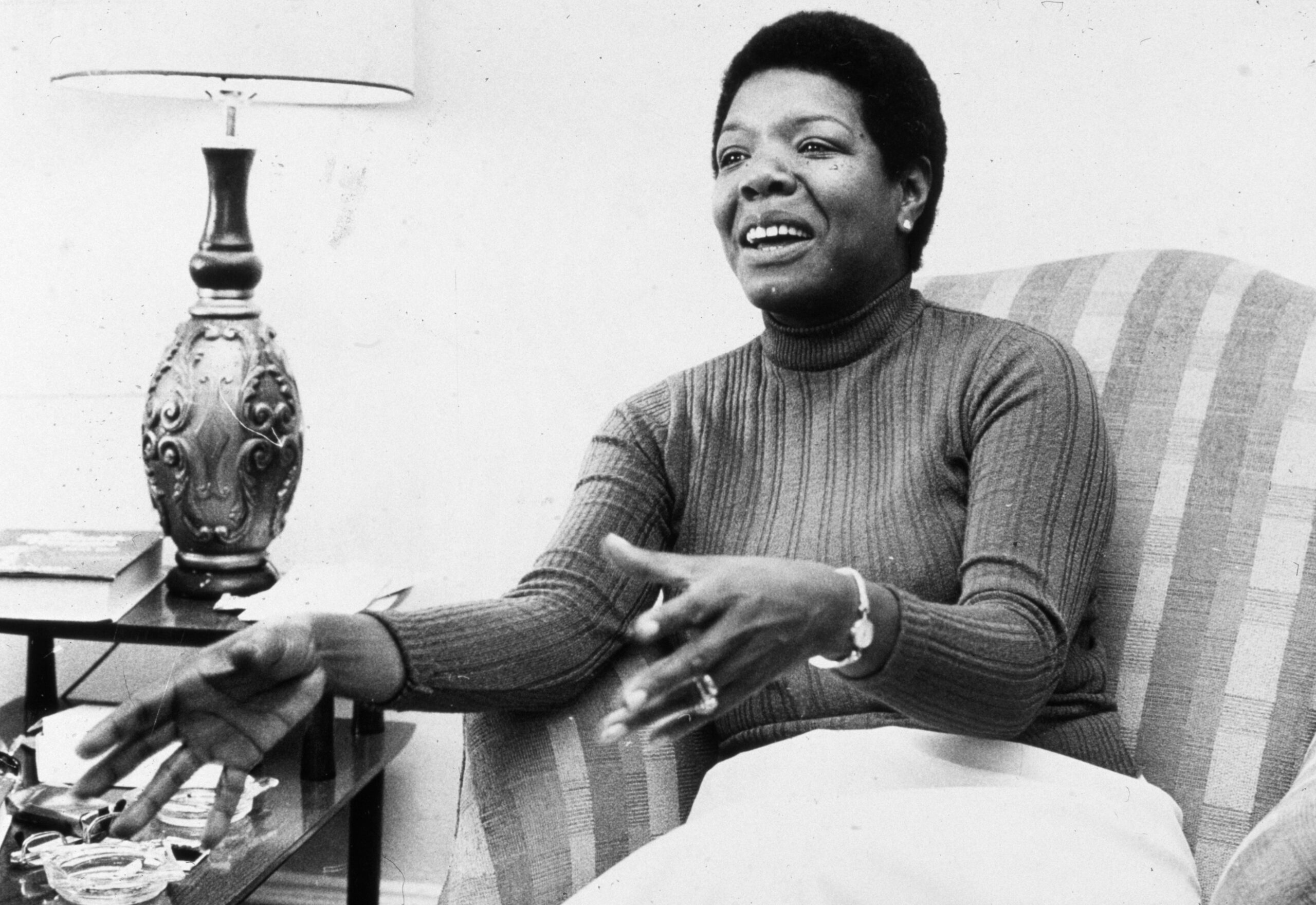“The answer came to me with the suddenness of a collision,” Maya Angelou wrote in I Know Why the Caged Bird Sings.
It was an appropriate metaphor: Angelou was recounting her decision to become a streetcar operator in San Francisco, a job she held briefly during World War II while a student at George Washington High School.
She was not the first Black conductor (that honor goes to Audley Cole) nor the first woman conductor—but she was certainly the most famous. She also overcame numerous obstacles—her race, gender and tender age of 15—to achieve her dream.
Angelou was rebuffed at the Market Street Railway offices when she applied for the “conductorette” position she saw advertised in the San Francisco Chronicle, but that didn’t stop her from returning—again and again.
“The next three weeks were a honeycomb of determination with apertures for the days to go in and out,” she wrote in her memoir.
Eventually she got the job, cruising the hills of San Francisco on what was most likely the 5-McAllister line from the descriptions in her memoir.
It’s because of this incredible legacy that the nonprofit Market Street Railway seeks to acknowledge the famed novelist by naming a historic streetcar after her—the sole one left of the type she would have worked on—in her honor.
The streetcar in question sits in Muni’s Cameron Beach Yard, awaiting the funds and approval for the project to move forward. The proposal jumped an important hurdle a few weeks ago when it cleared the City Attorney’s Office, and it’s being prepared to go out for bids.
Once formal restoration begins, Market Street Railway would ask the San Francisco Municipal Transportation Agency board to formally dedicate the car to Angelou upon its completion, Market Street Railway President Rick Laubscher said.
“It’s on the top of the pile,” Laubscher told The Standard.
The contract includes two other vintage streetcars—one from Johnstown, Pennsylvania, and another from New Orleans that’s in the same condition it was in 1964.
“These cars are ideal for restoration because of their size,” Laubscher said, noting they can carry 50 to 55 passengers each.
The car to be named after Angelou, born in 1924, has a colorful history. After being retired from service in 1946, it became a jewelry store in Columbia, California, then an office in Geneva.
When the old Market Street Railway and SFMTA combined, the transit agency sought to get rid of much of its fleet.
“They’d sell off cars for $50 if you could move them,” Laubscher said. “They ended up all over the place.”
The vintage car needs a full mechanical and electrical restoration along with upgrades to make it consistent with today’s operating and safety standards, and Laubscher hopes it starts as early as the middle of this year.
“We’re providing an everyday service with museum-quality equipment,” said Kevin Sheridan, supervisor of historic streetcar maintenance at Market Street Railway.
Instead of advertisements, the car would include displays showcasing how Angelou was a pioneering Black streetcar operator and telling the larger story of African American achievements in the world of transit—Muni employed more Black San Franciscans than any other city agency, according to Laubscher, and those pioneering employees broke through many barriers.
Angelou worked on the back platform of electric streetcars, collecting fares and ensuring passenger safety. She also liked the clothes. The uniform back then would have consisted of an Eisenhower jacket and pants, with a coin changer strapped around her waist.
“She did it because of the uniform,” Laubscher said.
“The thought of sailing up and down the hills of San Francisco in a dark-blue uniform, with a money changer at my belt, caught my fancy,” Angelou wrote in I Know Why the Caged Bird Sings.
But an earlier account in her memoir about living with her father in Los Angeles suggests another reason for why she found a transit job so appealing. When she escaped home after an ugly argument with her father’s girlfriend, Angelou found shelter in an abandoned streetcar. The four weeks she lived there became a formative period in her life.
“During the month that I spent in the yard I learned to drive, to curse and to dance,” Angelou wrote. “After hunting down unbroken bottles and selling them with a white girl from Missouri, a Mexican girl from Los Angeles and a Black girl from Oklahoma, I was never again to sense myself so solidly outside the pale of the human race.
“The lack of criticism evidenced by this ad hoc community influenced me, and set a tone of tolerance for my life.”
Angelou’s time taking shelter inside a streetcar made her into the person—and author—she eventually became. And San Francisco was where she put her love of streetcars into motion.
“For one whole semester the streetcars and I shimmied up and scooted down the sheer hills of San Francisco,” Angelou wrote.
“I clanged and cleared my way down Market Street, with its honky-tonk homes for homeless sailors, past the quiet retreat of Golden Gate Park and along closed undwelled-in-looking dwellings of the Sunset District.”
There have only been two other San Francisco streetcars named for individuals: Herb Caen and Harvey Milk.
A streetcar named Maya Angelou—we can’t wait.
